
Imagine a world in which students learn science and solve problems through contributing to real research with the help of a teacher’s guiding hand. In this world, students build confidence in collecting and identifying data, experience the scientific method through play, and participate in real research. Lucky for the students in Broward County Public Schools in southeast Florida, they don’t have to imagine! The Broward County Public Schools teachers are equipped with a tool embedded in their learning management system, Canvas, that allows them to do exactly that!
A few years ago, a partnership was built to develop a specialty service for school districts in the form of a plug-and-play external tool for Canvas that safely connects SciStarter projects through Canvas assignments, rosters, and grades! Now, educators in Broward County Public Schools can use the tool to empower students to impact real science with their experiences completing each project. What is referred to as the Broward PBL @SciStarter program, Broward County Schools and SciStarter work together to specially select and customize citizen science projects from SciStarter.org to support the learning goals of students from kindergarten to high school.
Coinciding with National Squirrel Day, January 21st, 2023, Broward County school district hosted a workshop to train teachers on what citizen science is, what it looks like and how to use the external tool (SciStarter LTI) in their classrooms. This training occurs at least once a year to induct a new group of teachers into the specifics of how to use the tool most effectively.
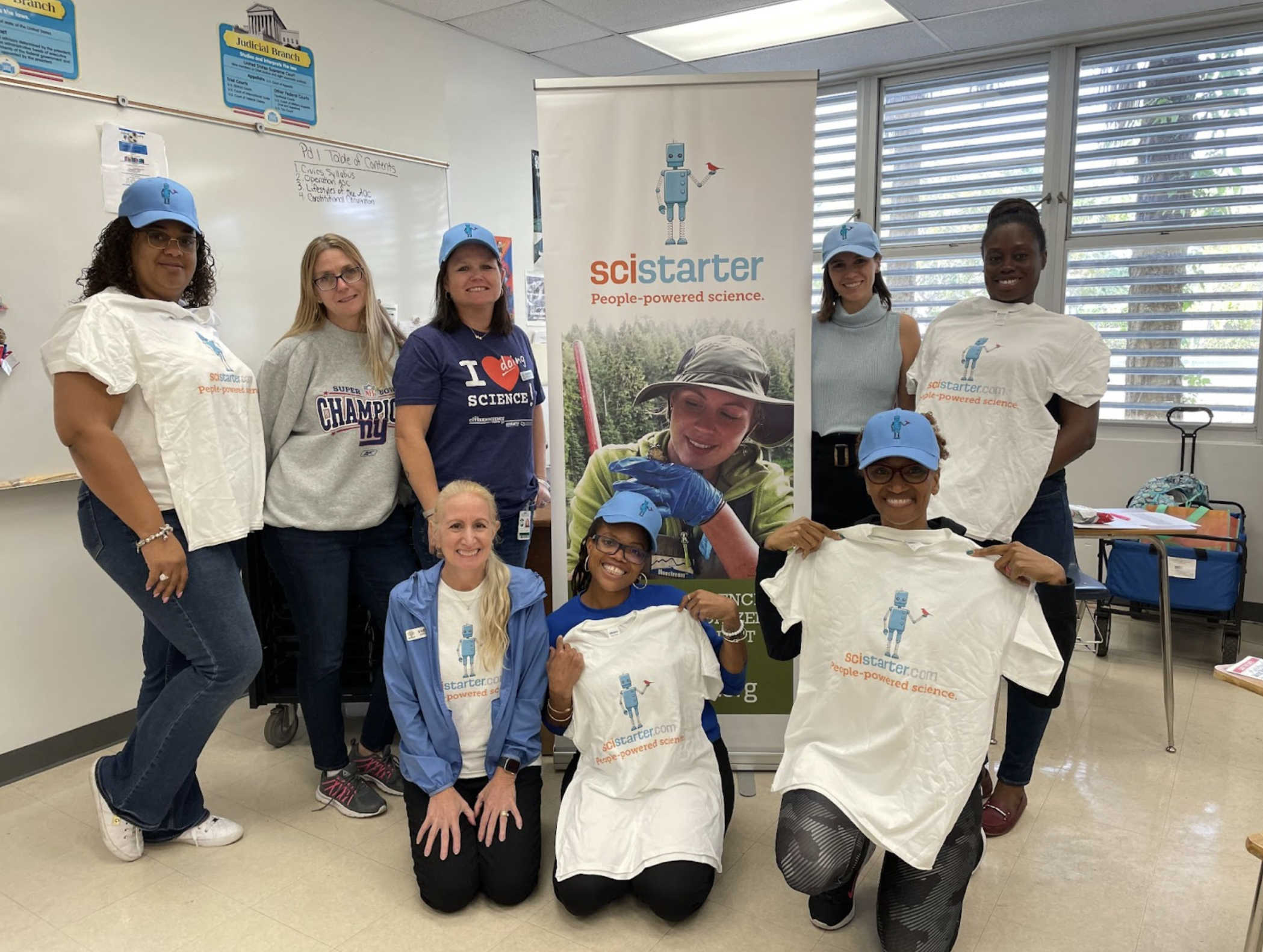
The Workshop
For this workshop, Emma Giles, a program coordinator for SciStarter, traveled to Broward County to co-facilitate the workshop along with Sheryl Arriola and Summer Scarlatelli, STEM+CS Instructional facilitators within the department of Applied Learning at Broward County Public Schools.
In attendance on January 21st were five teachers of various grade levels, from 1st grade to high school, and subjects; science, math and English Language Art.
At the start of the day, the teachers received an introduction to citizen science and SciStarter. This introduction included examples of citizen science being used in classrooms. For example, teachers incorporate the Great Sunflower Project into a school garden, or utilize the Marine Debris Tracker to host an environmentally conscious service event. Some teachers have created an Ant Picnic with their classes to demonstrate the different diets of ants and cycle students through the scientific method of an experiment. There are many examples of how other teachers have incorporated citizen science into their classrooms, but the main idea is that the students are given the opportunity to learn through doing, developing a memory less likely to disappear than reading a textbook.
The SciStarter LTI
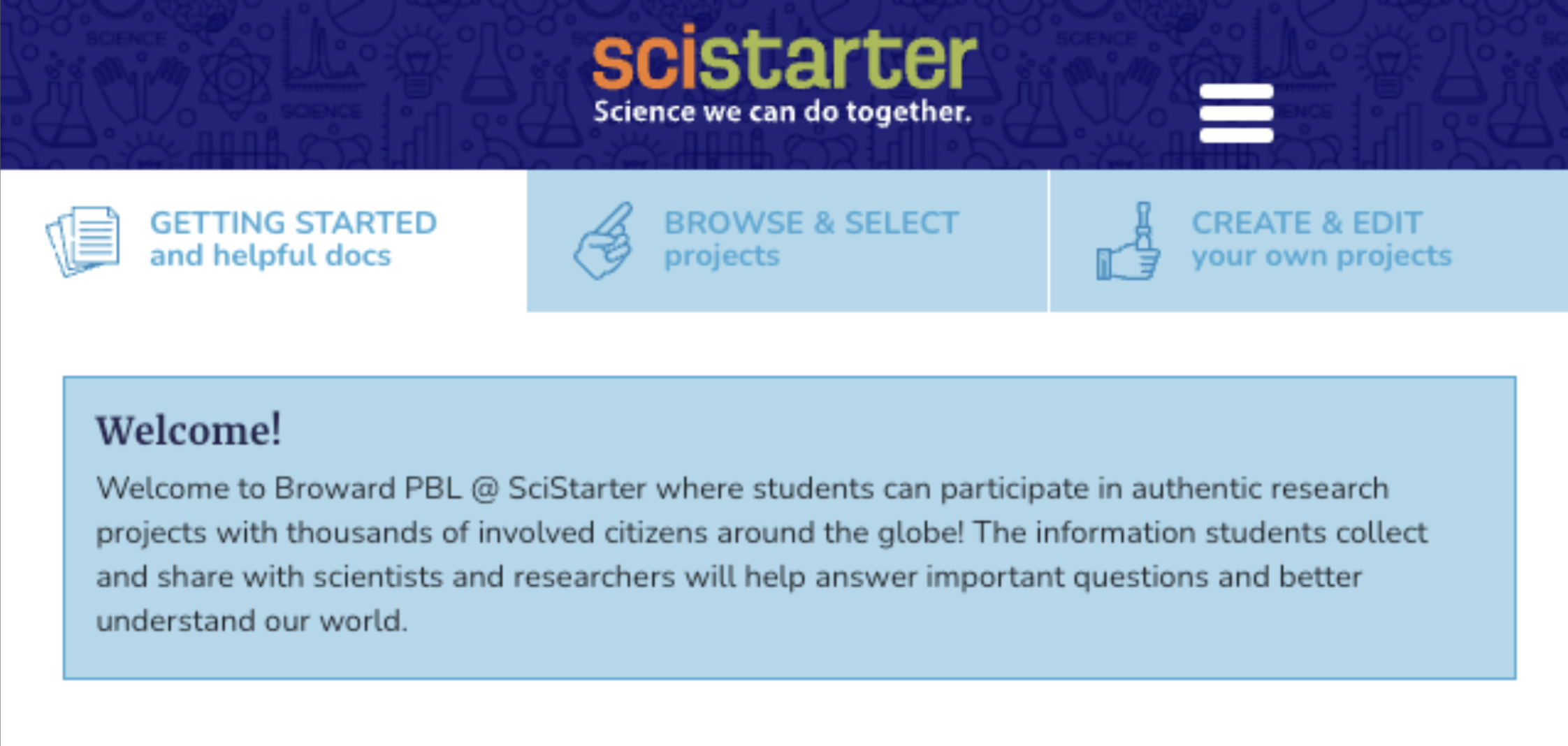
All Broward County Public Schools teachers have access to the external tool, the “SciStarter LTI,” within their school canvas accounts. This tool enables teachers to assign citizen science projects to their students to be completed in the way of the teacher’s choosing: independently or in groups within the classroom, at home or a different community space.
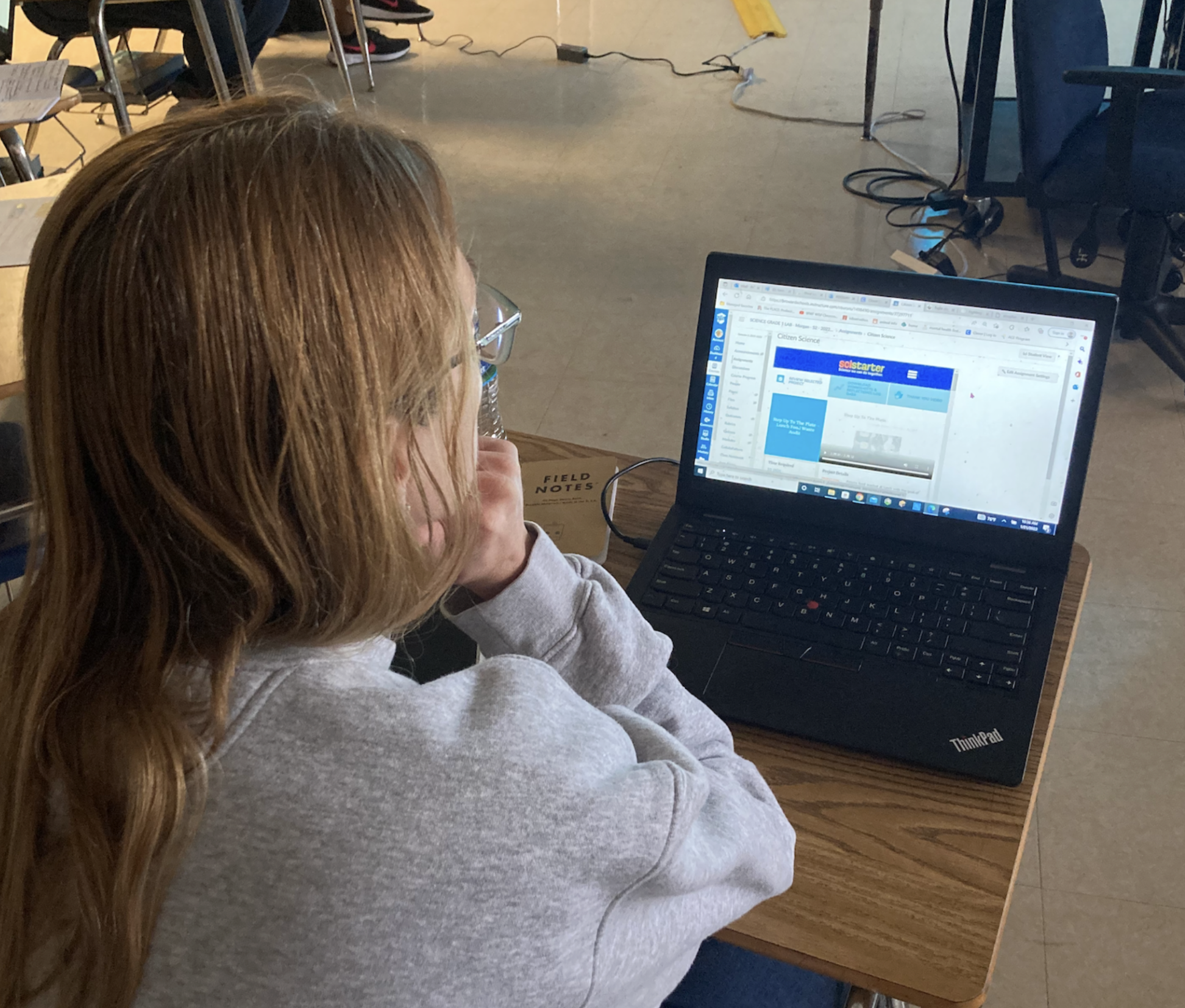
To complete an assigned project, students are expected to gather data to submit in a Canvas-compatible practice worksheet as well as a reflection to encourage students to think critically about what they have learned. Teachers can edit assignments to include unique instructions, and the LTI automatically grades submissions of data worksheets and reflection worksheets for completion, reserving the ability for teachers to change the grades as needed.
In addition to enabling teachers to assign projects, the SciStarter LTI provides teachers with:
- Supplemental resources such as printable information sheets to support student understanding
- Instructions for the data to be submitted to the official citizen science project by the teacher or student (A requirement for it to be citizen science!).
- Data on the completion of citizen science projects across the school district.
A special feature of the LTI is the ability for a class to create their own project addressing a perceived problem in their community or school environment. Within the LTI is a guided framework for creating projects which can be completed by students and external community members.
Teachers have access to a set of tutorials of slides and videos explaining the various ways in which to use the tool through the external tool itself as well as a unique class created by Arriola and Scarlatelli with additional resources. The workshop group received a printed list of all projects currently available on the tool, a set of specifically chosen projects to best represent the curriculum. Below is a list of the projects:
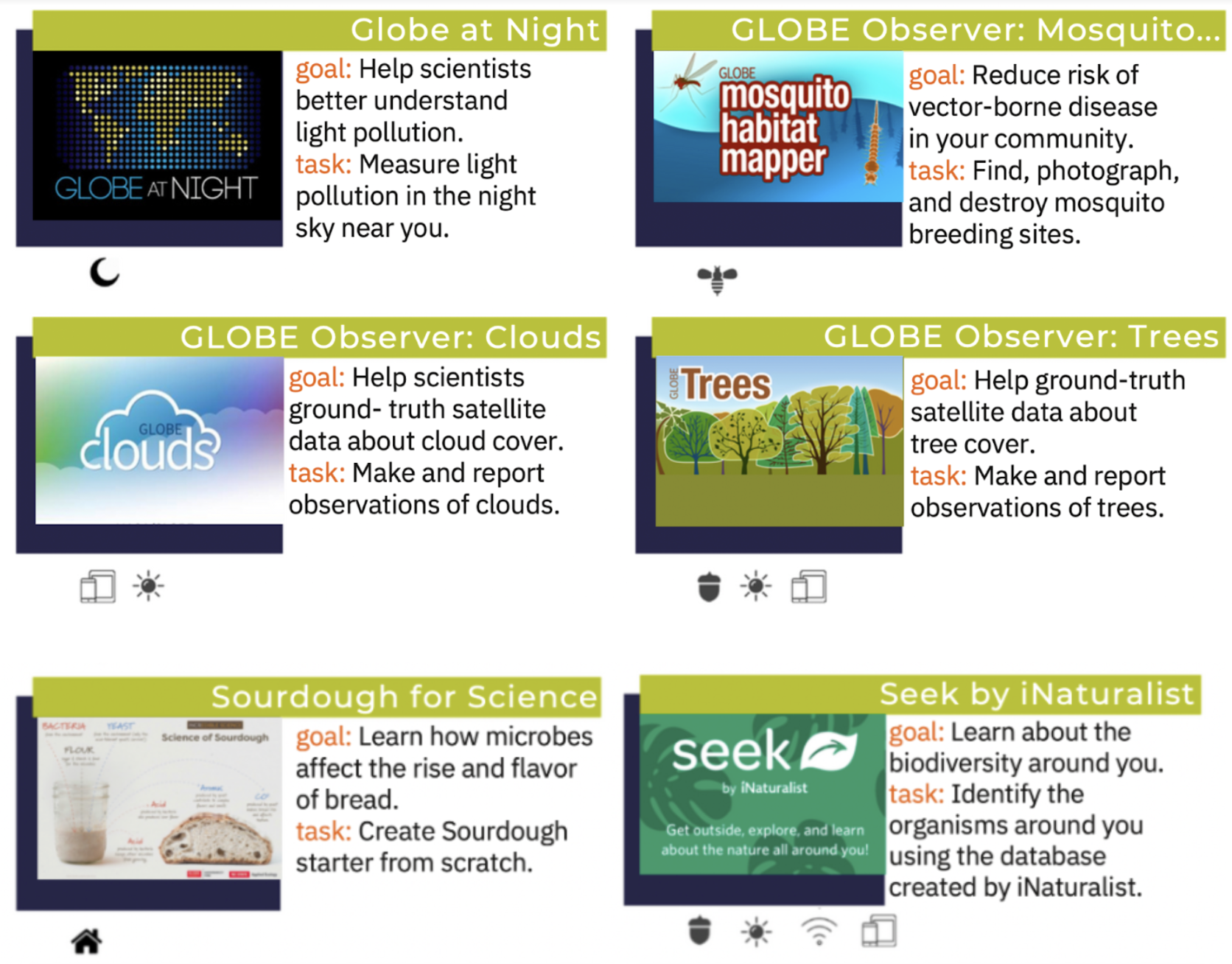
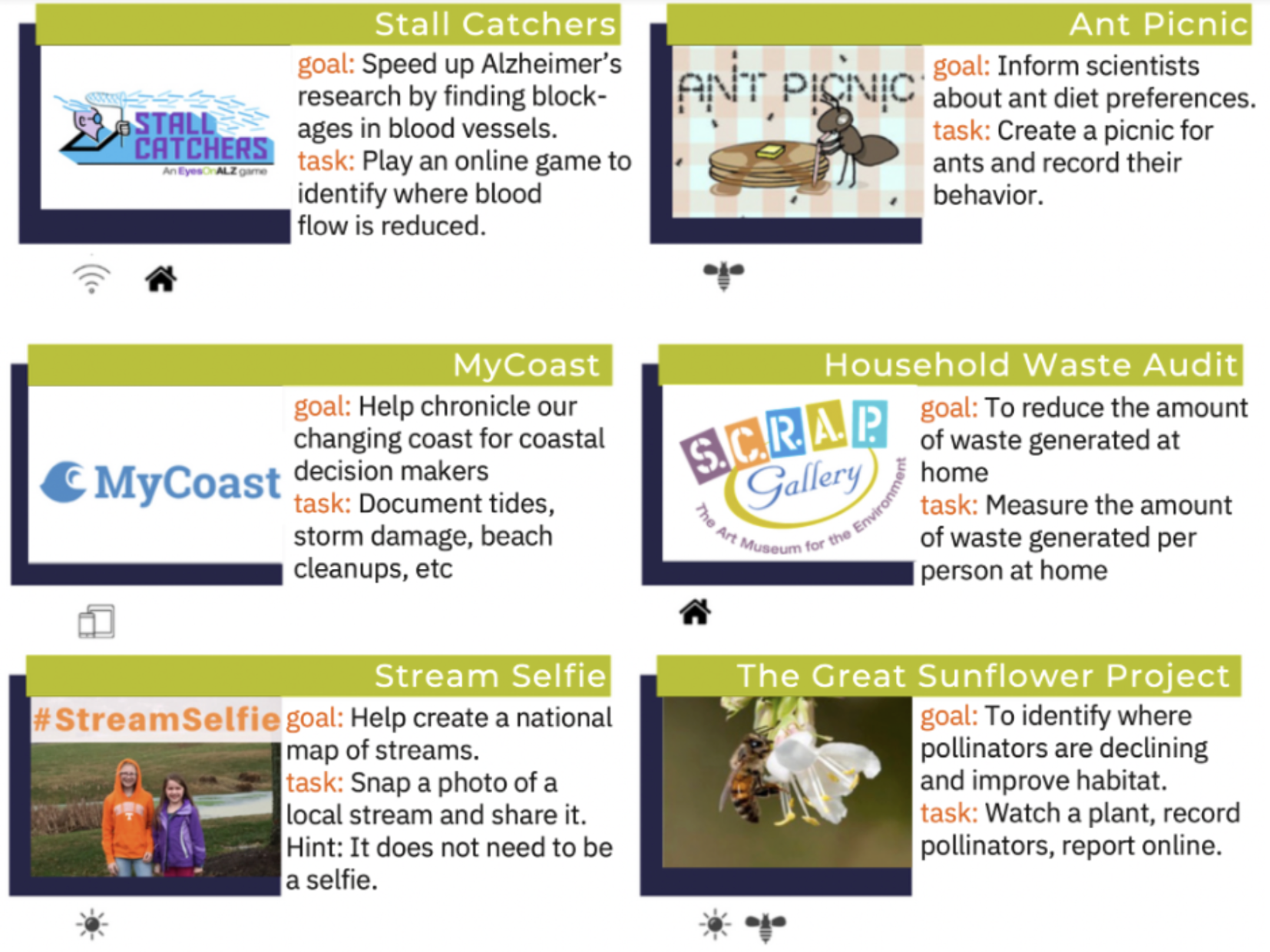
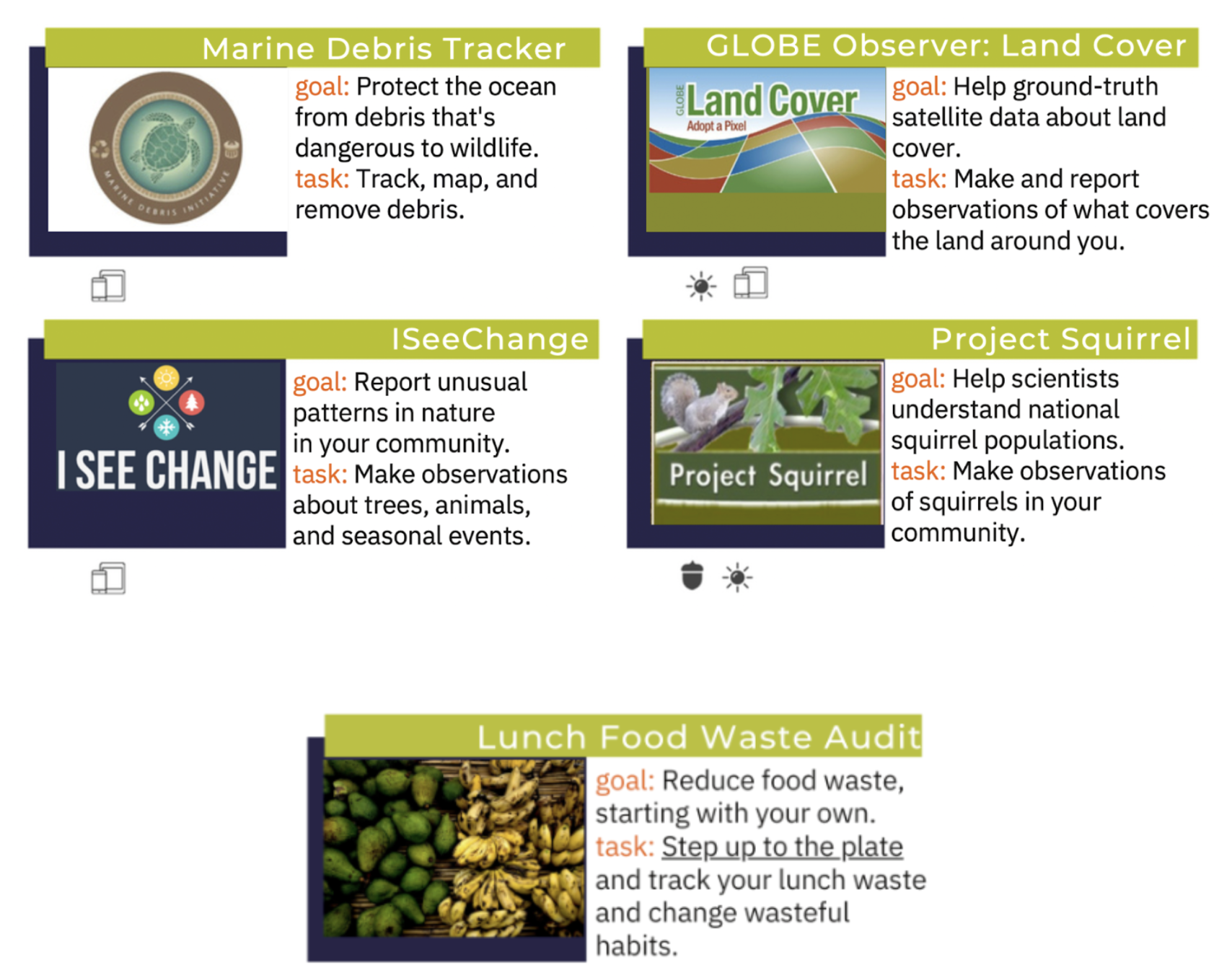
Learning Through Play
Learning how to be a citizen scientist means getting out of the classroom!
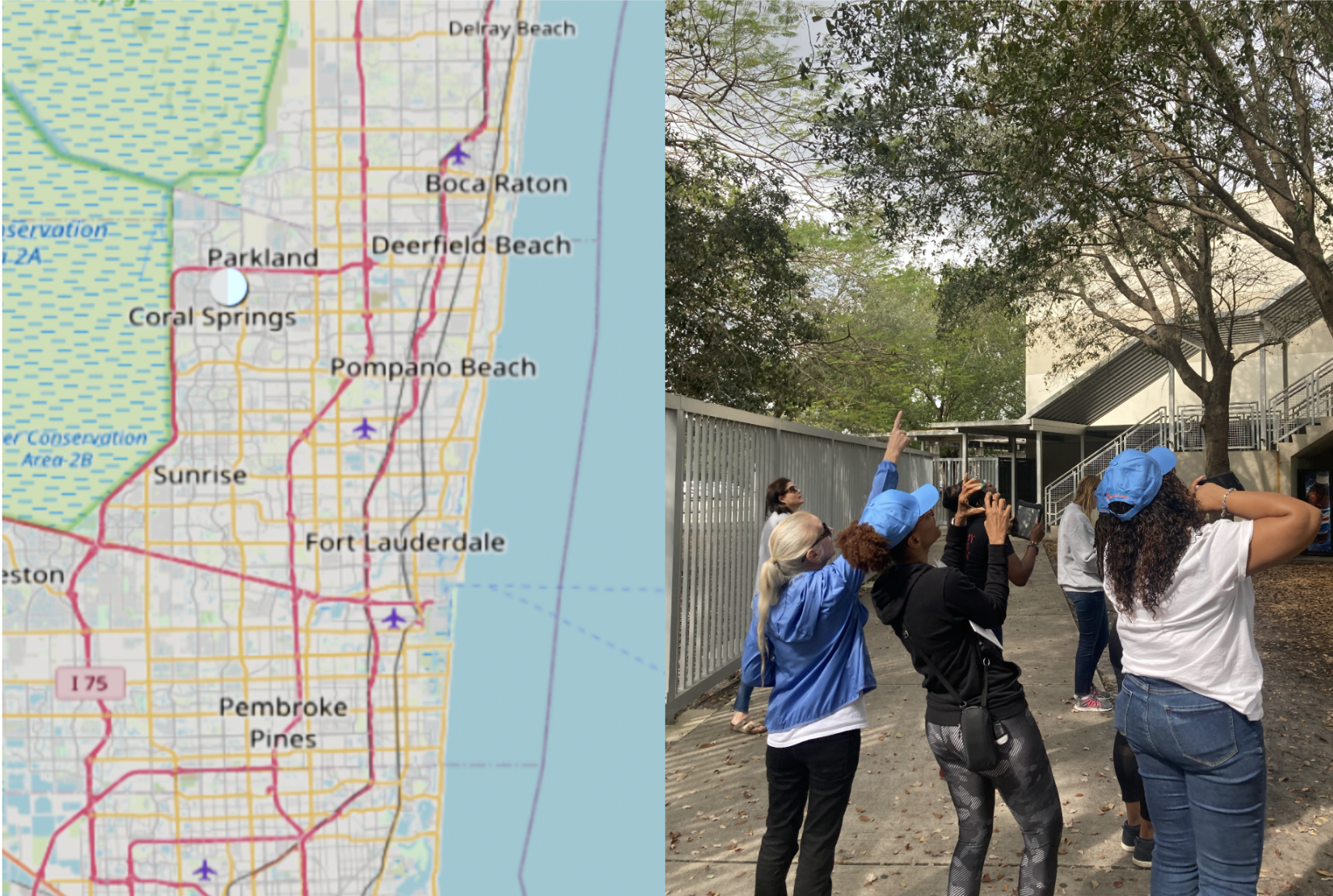
Teachers ventured outside to practice projects on the GLOBE Observer app, iNaturalist & Seek!, Marine Debris Tracker, and ISeeChange. The outside “playtime” deepened the personal connections between the teachers and led to collaborative problem-solving while learning these projects with limited time. See below for an image of the teachers working together to make an observation on GLOBE Observer: Clouds.
In the LTI version of GLOBE Observer: Clouds, the teachers can print helpful diagrams to assist students in identifying clouds without the direct use of the mobile app. By simplifying the data collection methods, teachers of all grade levels can experiment with the projects. In the case of GLOBE Observer: Clouds, this might mean an elementary class going outside and working in groups to make educated guesses based on the hints from the helpful diagrams. Moving indoors, the observations can be deliberated before the teacher reveals the most accurate answers and why. The class might choose to collect the data as a group, using the mobile app on the school-provided tech or a teacher’s smartphone.
After the workshop group debriefed their experiences with the provided projects, we returned to celebrating National Squirrel Day, exiting the classroom again to work as a team in identifying the quantity of squirrels present on the campus for Project Squirrel. Unfortunately, it seems the squirrels took the day off, which led to an informal discussion on the data point of zero. While it may be disappointing to submit a data point of “zero squirrels,” the lack of squirrels provides the researchers with substantial information that informs squirrel populations data across the world.
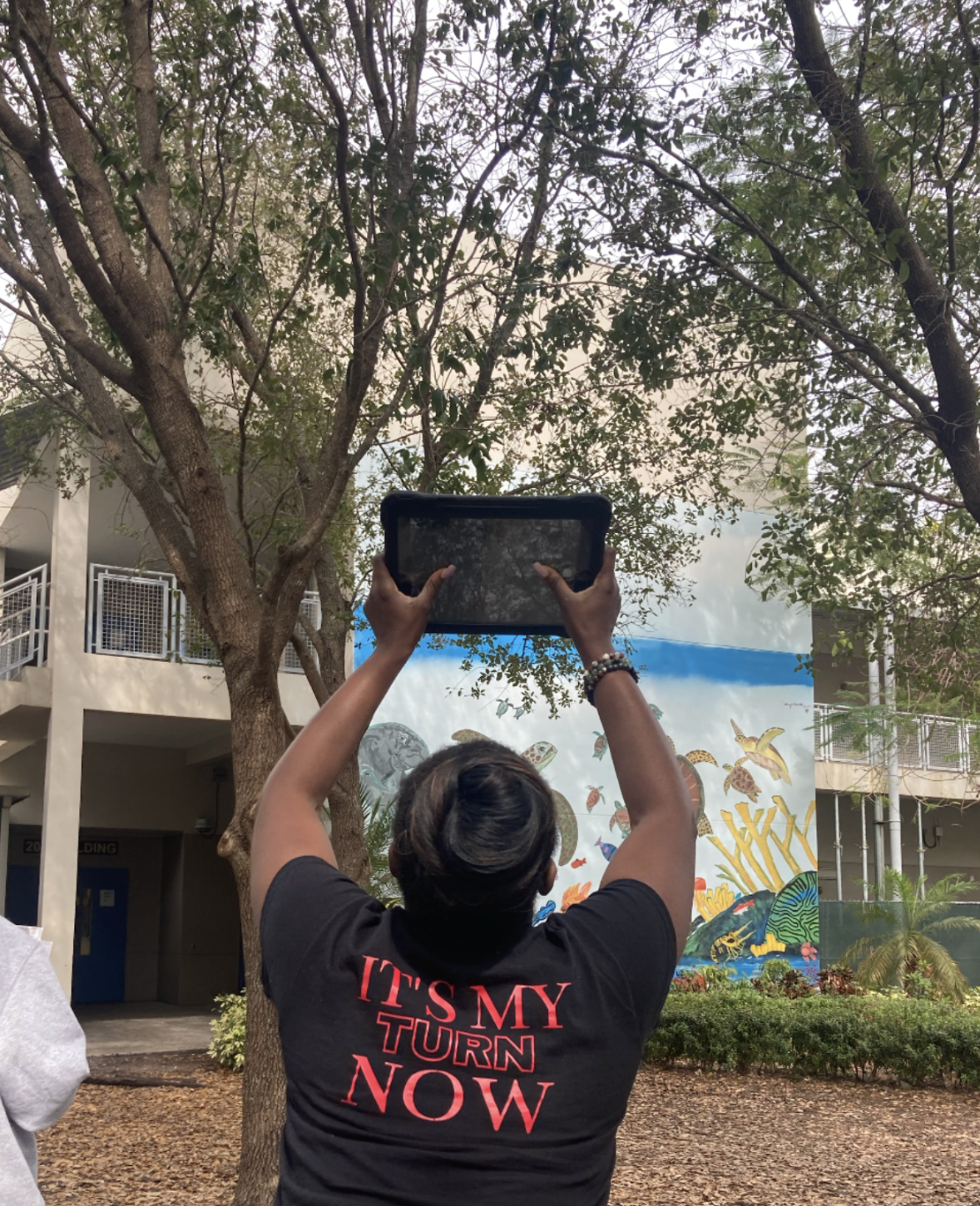
Citizen Science Goes Beyond Science
After taking a break for lunch, teachers shared their thoughts about their classes and how they may perceive testing out citizen science projects. As a method of project-based learning, citizen science can easily exist outside of the science classroom. Taking advantage of the unique group of participants, the teachers were put into two groups, one for elementary school, and another for middle school and above to develop a concept map to determine how SciStarter projects may fit into the existing curriculum. It was exciting to see that while the teachers varied in subjects and grade level, the group was able to relate to each other and diversify ideas on how to use the projects in the various classrooms. See the below images for the ideas both groups developed.
In the elementary school group, two teachers evaluated the diverse uses of the Step up to the Plate: Lunch Waste Audit and the GLOBE Observer Clouds projects. The two teachers were able to connect GLOBE to related science lessons, art, additional citizen science projects, and more! For the Food Waste Audit, they considered the potential development of a composting program or working with the Earth Club. The Food Waste Audit also provides opportunities to teach the ways we can address climate change, and include the community in events or showcases of results to expand the audience of learners.
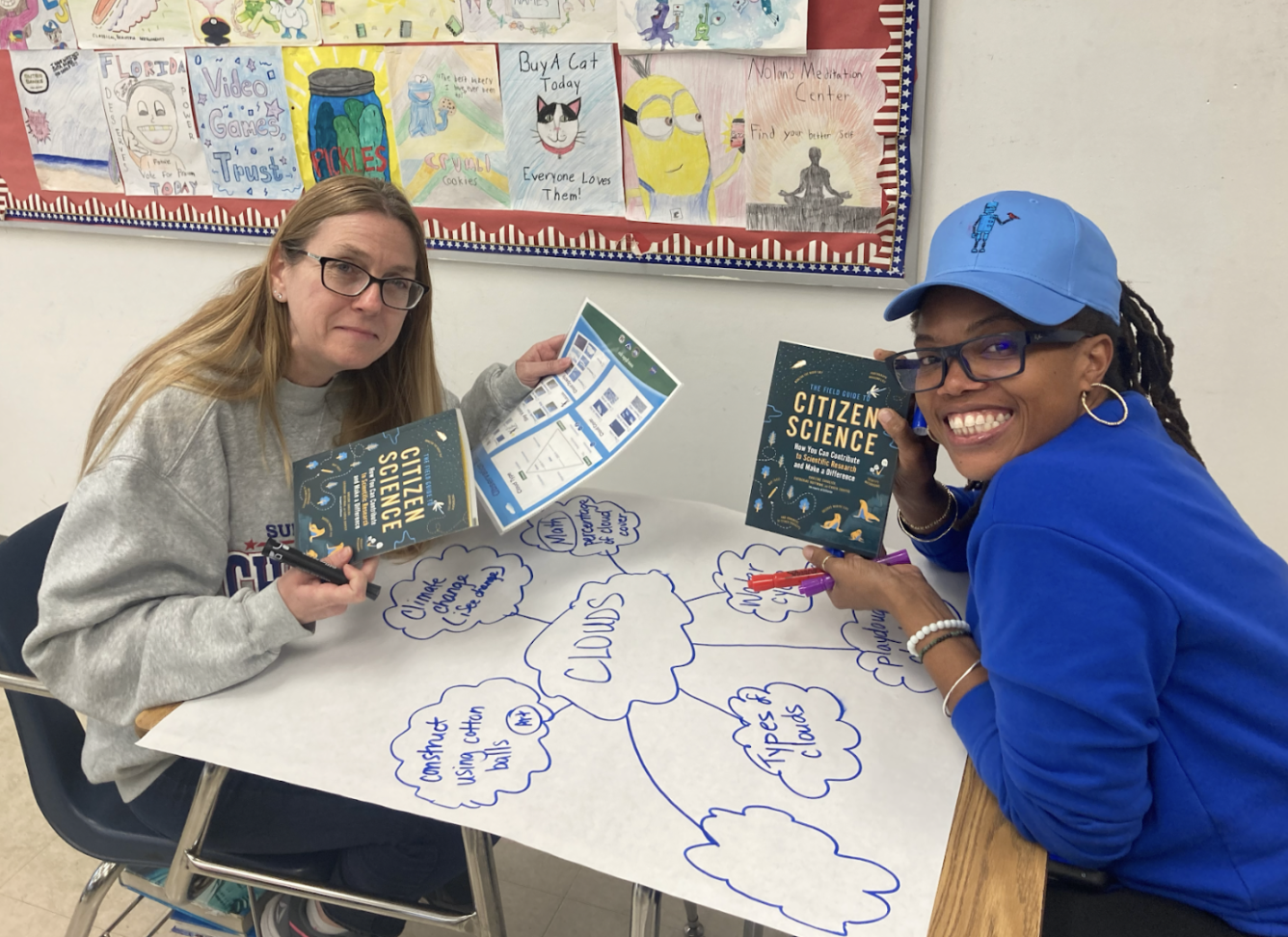
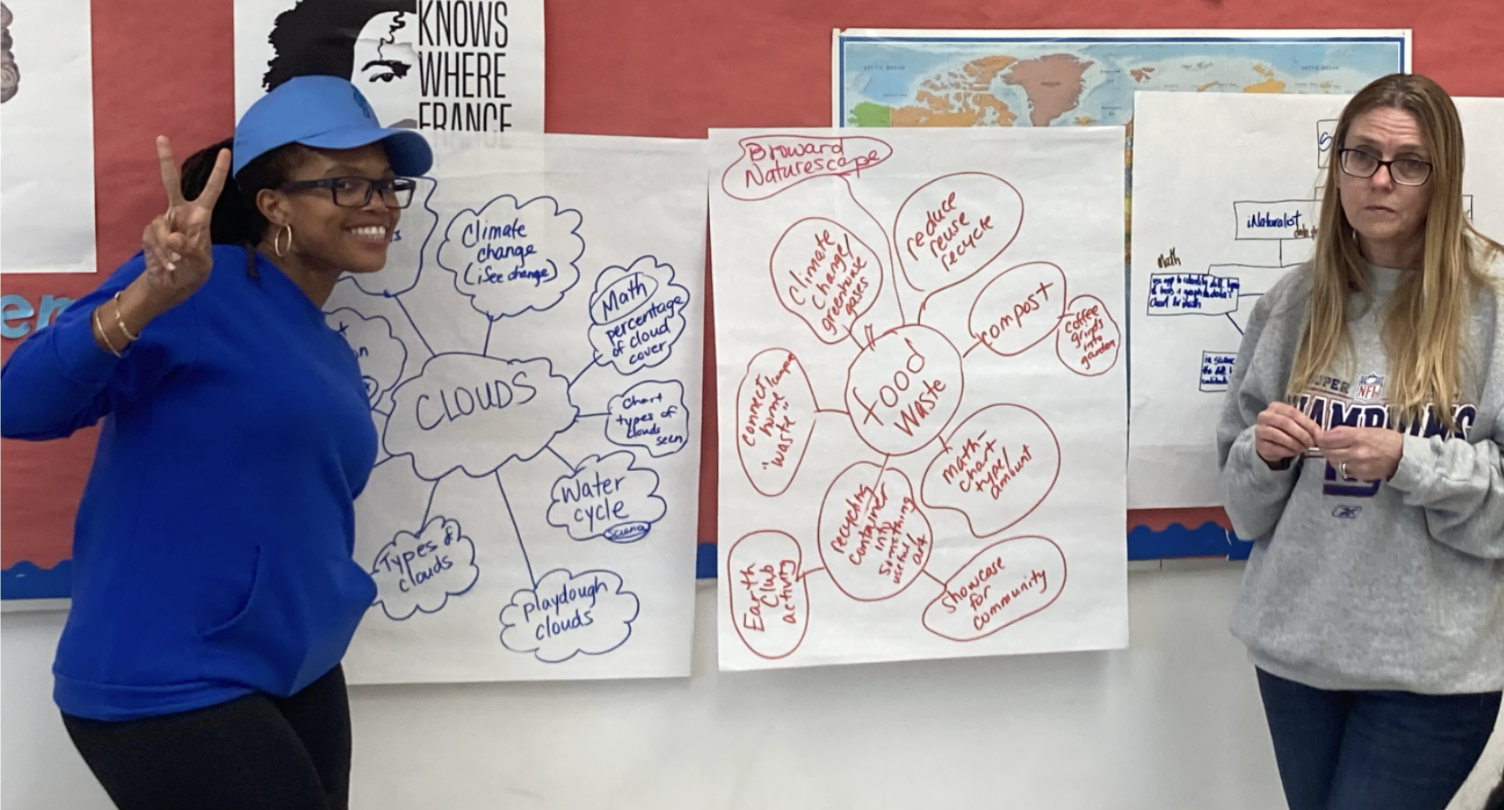
In the middle school and up group, three teachers considered three subjects – science, math and English – and how to frame projects to fit each topic. To challenge the group, Giles suggested the project Stall Catchers, an Alzheimer’s research project where users interpret data on a gamified online platform. A related science lesson may involve learning about medical research and how scientists use knowledge of anatomy and technology in medicine. An English teacher can take the topic and build a writing exercise to explore personal connections to degenerative illness or new knowledge gained from playing the Stall Catchers game. In math class, a teacher can use the data of Stall Catchers to teach students how to plot data in a meaningful way and determine the value of numbers.
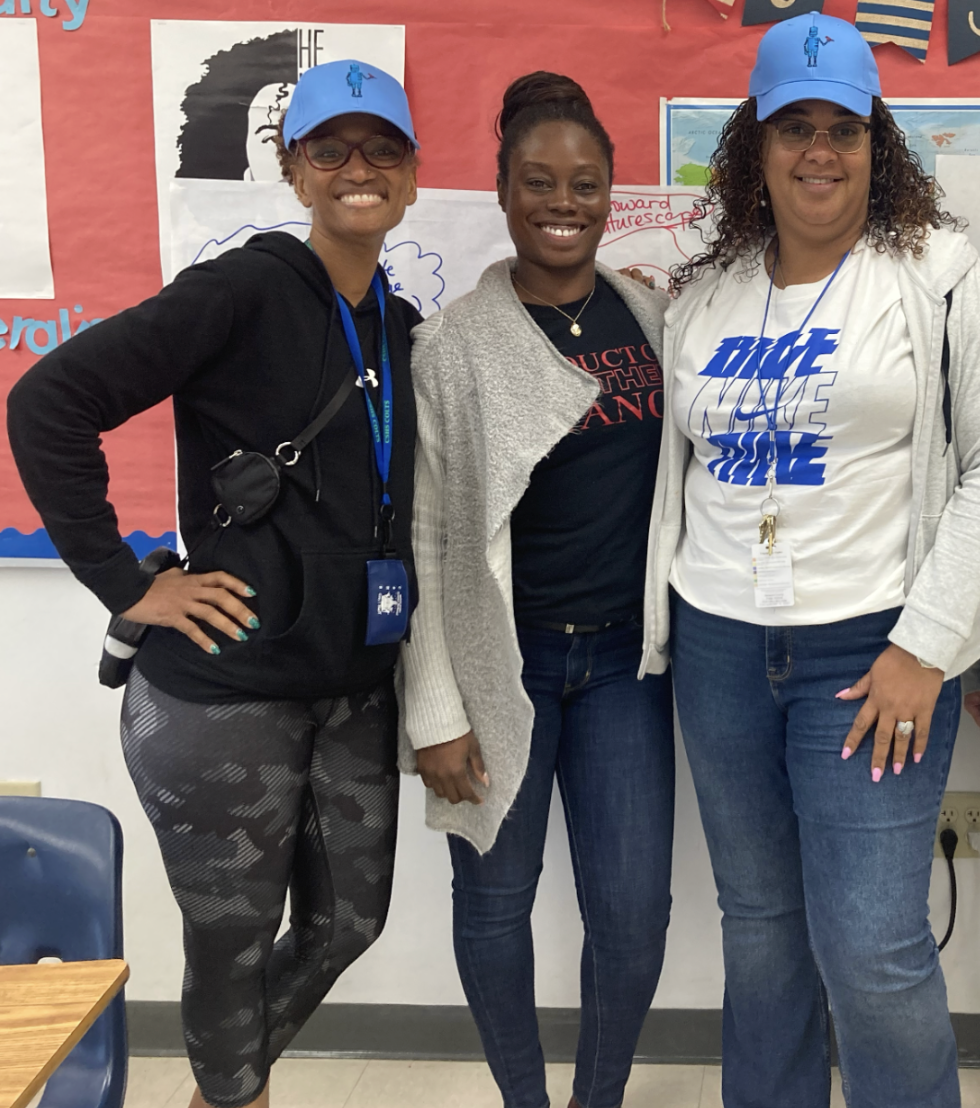
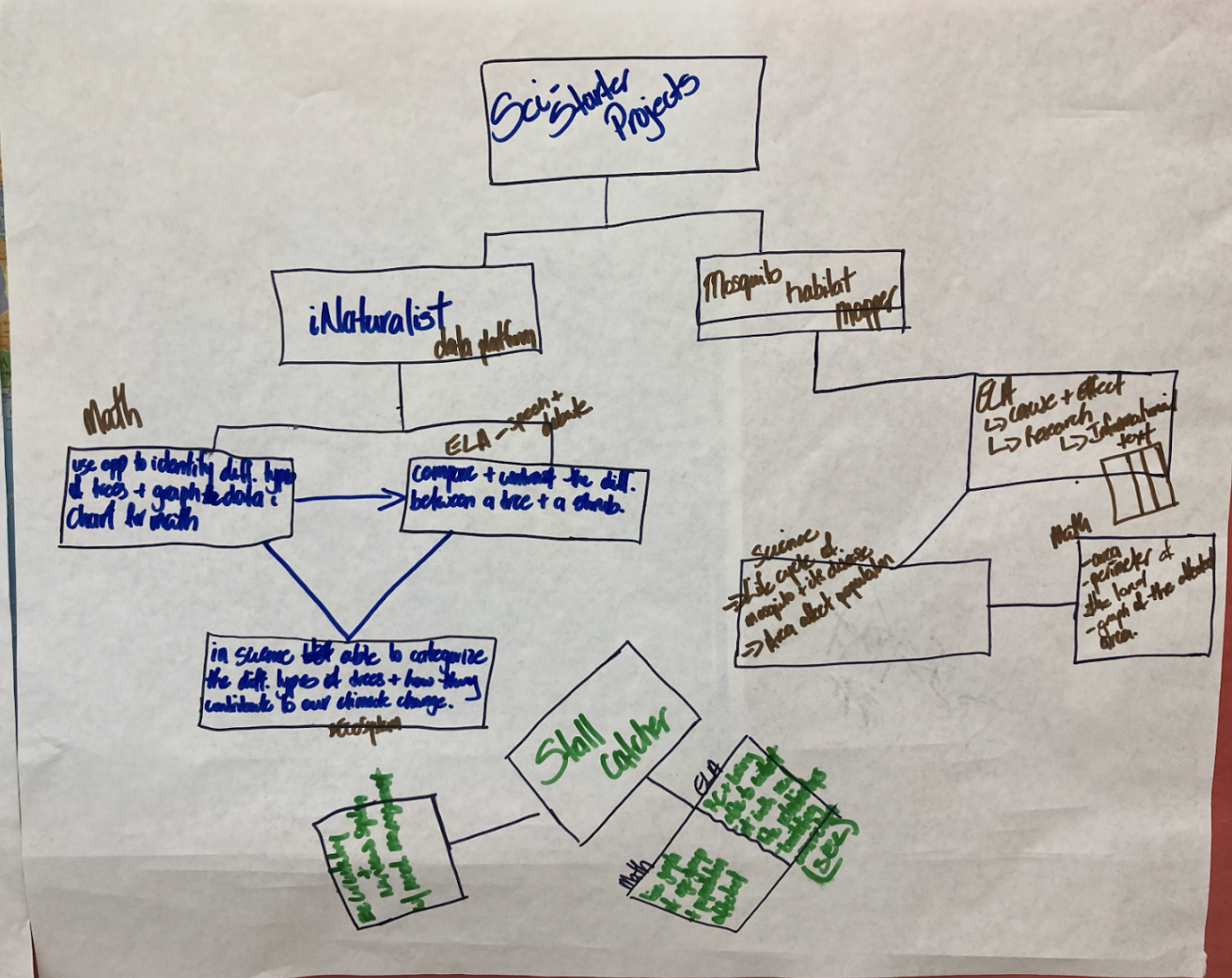
It was inspiring to see so many ideas shared in this exercise. It led the path to confidence in completing citizen science projects independently and in the classroom setting. Starting as a group that reported little to no knowledge of citizen science before the workshop, every single teacher reported moderate to high likelihood of using the SciStarter LTI for lesson planning moving forward. Additionally, all teachers reported confidence in their new found ability to explain citizen science to others with an interest in sharing the tool with their colleagues in their various schools.
The 5th Annual Broward Youth Climate Summit
In a quick turnaround, Broward County Public Schools hosted their Annual Youth Climate Summit, on February 10th, in which the schools can take their understanding to the next level, and motivate each other to engage with science in meaningful ways. SciStarter adviser and representative, Caroline Nickerson (pictured below), presented to 5th grade classes on citizen science, illustrating the importance of climate reporting through ISeeChange, a citizen science app for reporting changes in climate over time.
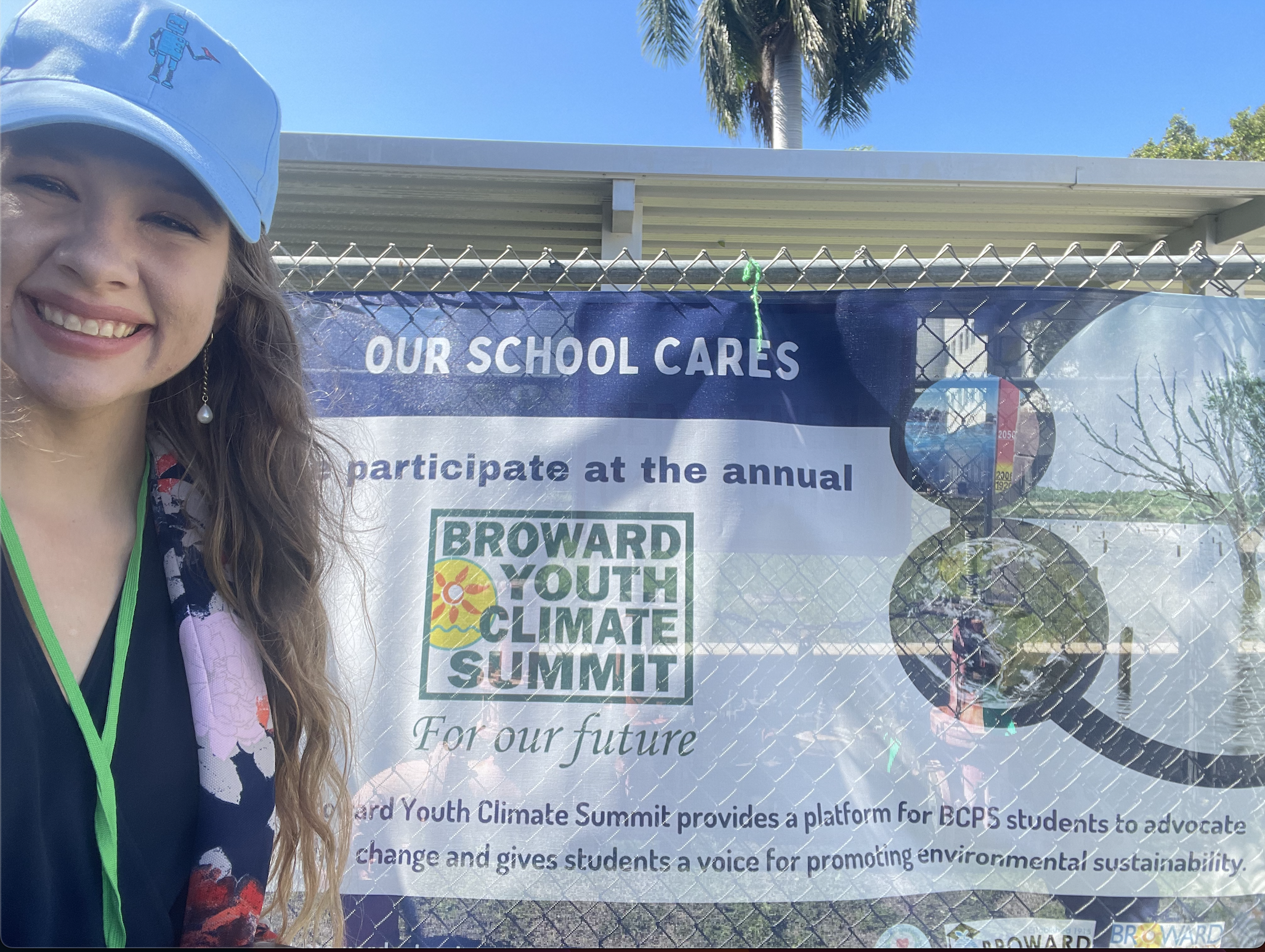
With the SciStarter LTI tool in their hands, there is no stopping the collective impact of the Broward County Public Schools teachers and student body.

Keep up the amazing work, Broward County Public Schools!
For more information on Citizen Science in schools and for educators, go to SciStarter.org/education and/or contact us at info@scistarter.org

